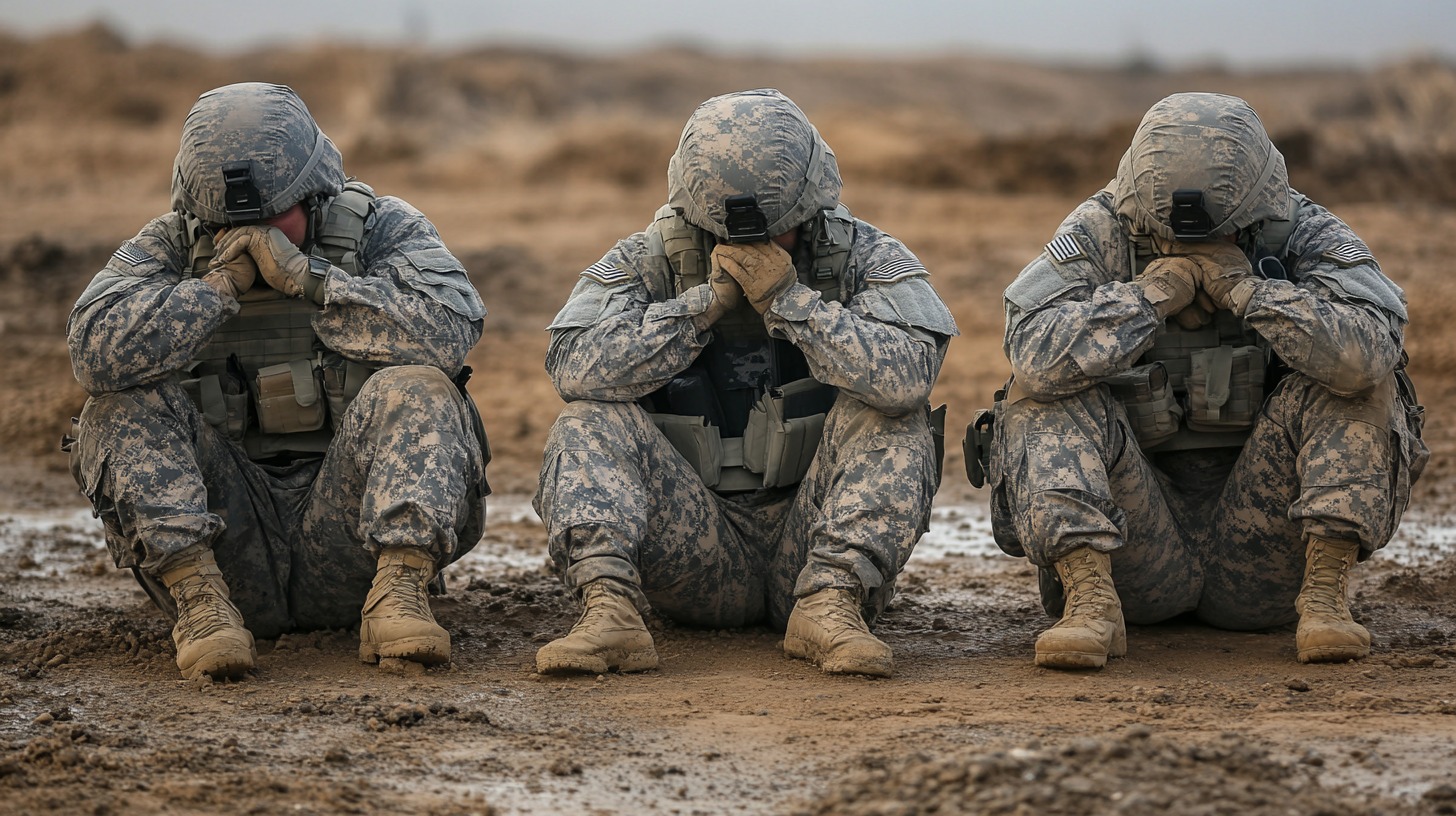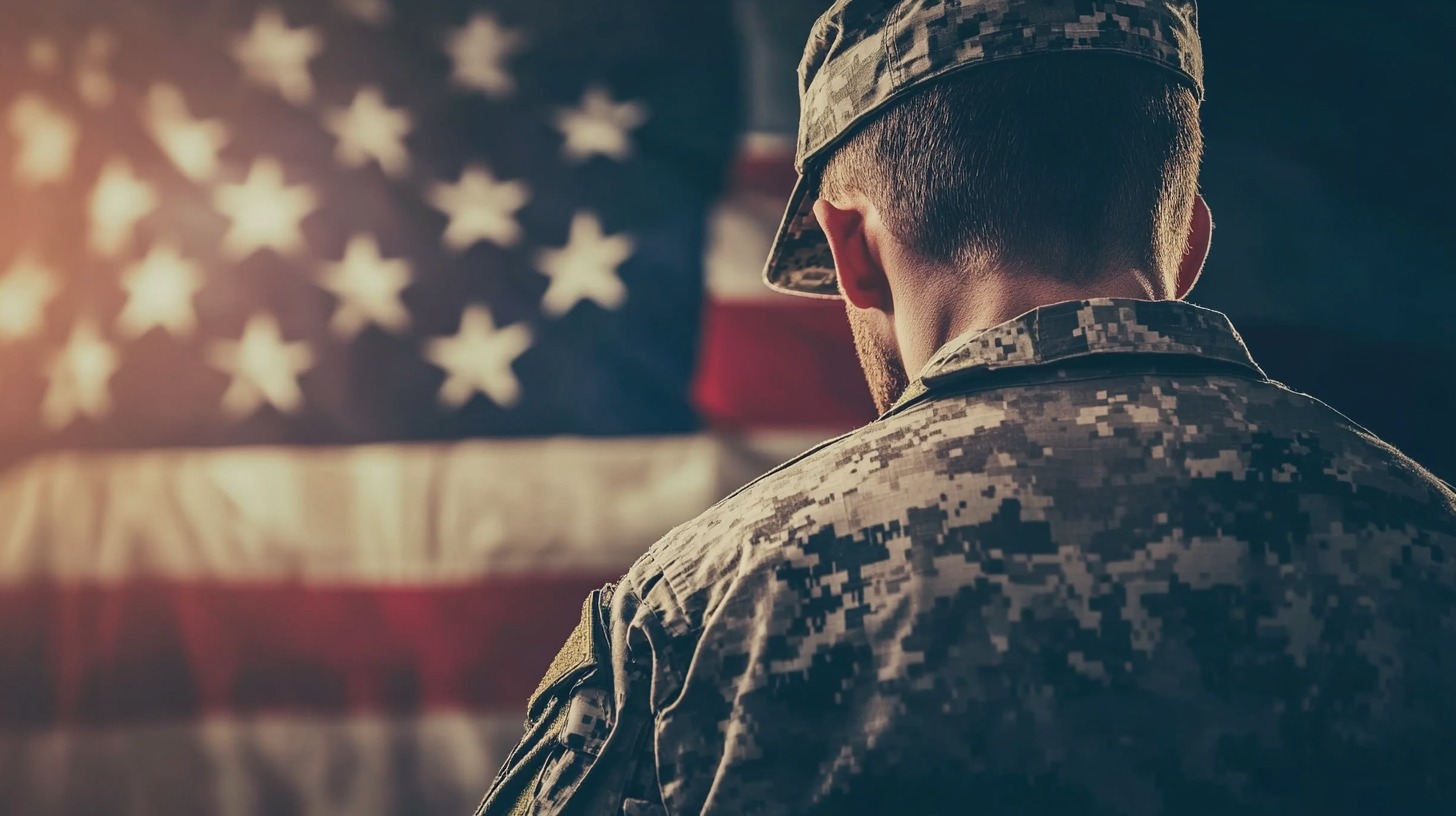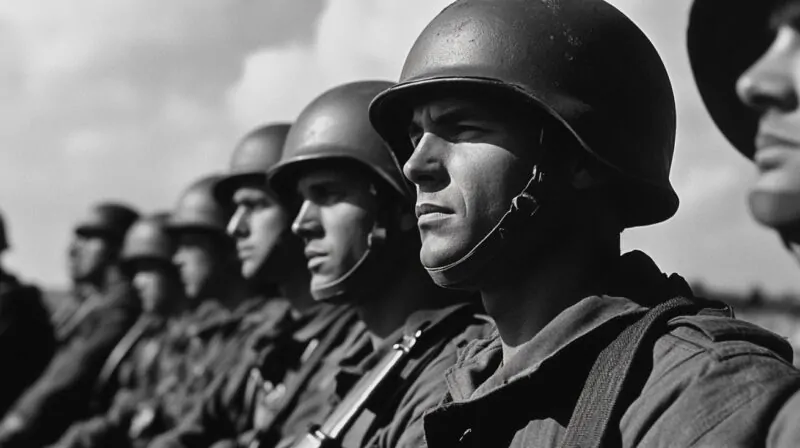If you’re a veteran dealing with anxiety and believe your VA disability rating for anxiety doesn’t reflect the true weight of your struggle, it’s time to take action.
Increasing your VA disability rating for anxiety isn’t a guessing game, it requires a clear understanding of the process, rock-solid evidence, and the will to advocate for yourself.
To help you with this process, we will break down what you need to know to build a strong case, connect your condition to service, and get the rating you deserve.
Let’s get to work.
Steps to Increase a VA Rating for Anxiety
- Establishing a service connection
- Gathering relevant evidence
- Demonstrating the impact on daily life and occupational function
- Thorough documentation and preparation
Let us discuss each of them in greater detail.
1. Establishing a Service Connection

Veterans need to show that their anxiety is connected to their military service.
There are three primary ways to establish this connection:
- Direct Service Connection applies if the anxiety developed directly due to specific events during service, such as traumatic incidents or combat exposure.
- In these cases, the veteran needs to document how these events led to their anxiety diagnosis.
- Anxiety may also arise as a secondary condition linked to an existing service-connected disability, like PTSD or chronic physical pain.
- Veterans can demonstrate that their anxiety is a consequence of managing another debilitating condition.
- If a veteran had anxiety before service, they may still qualify for an increased rating if they can prove their case.
2. Gathering Relevant Evidence
Evidence is essential to validate both the existence of the anxiety disorder and its connection to military service. Key documentation includes:
- Current Medical Diagnosis: A recent and clear diagnosis of anxiety from a qualified healthcare professional is required.
- Service-Related Medical Records: Records from military service documenting related symptoms or diagnoses can directly support the claim.
- Buddy Statements: Statements from family members, friends, or fellow service members (often referred to as “buddy statements”) can offer valuable perspectives on how anxiety affects the veteran’s daily life.
- Military Documentation: Records that reflect service incidents, deployments, or experiences that may have contributed to the onset of anxiety.
3. Demonstrating the Impact on Daily Life and Occupational Function

To increase the VA rating, veterans must show the significant effect of anxiety on their everyday activities and work capability.
- Basic routines
- Social interactions
- Personal relationships
By doing so, it is possible to strengthen the case.
Evidence showing reduced productivity, frequent absences, or challenges in maintaining employment can demonstrate the severity of the disorder.
4. Thorough Documentation and Preparation
Building a strong case requires organized, detailed, and comprehensive documentation of the anxiety disorder’s symptoms and impact.
The preparation not only supports the initial claim but also aids in any appeals process if necessary.
Submitting all relevant medical records, personal statements, and supporting documents ensures that the VA has a full understanding of the condition’s impact.
Addressing Denied Claims and Low Ratings

When a VA disability claim for anxiety is denied or given a lower-than-expected rating, veterans have several options to challenge the decision.
1. Higher-Level Review
The Higher-Level Review option allows veterans to request a fresh review of their existing claims by a more experienced VA claims adjudicator.
Key features of this review process include:
- No New Evidence Required: Veterans do not need to submit additional evidence; instead, the request is based on an assertion that the initial review overlooked key details or made an error.
- One-Time Decision Review: Veterans can only request a Higher-Level Review once per claim, making it crucial to ensure all aspects of the original claim are documented before submission.
- Option for Informal Conference: Applicants or their representatives may request an informal phone conference with the reviewer to clarify aspects of the claim and highlight any overlooked details.
2. Supplemental Claim
A Supplemental Claim allows veterans to introduce new evidence that may strengthen their case. This pathway is especially useful if:
- New and Relevant Evidence is Available: Veterans can provide new medical records, additional buddy statements, or recent evaluations that show the impact of anxiety symptoms more clearly.
- Filing a Supplemental Claim After a Higher-Level Review: Those who have completed a Higher-Level Review and still believe the decision is inadequate can pursue this option if they have new information.
- VA’s Duty to Assist Applies: In this pathway, the VA is required to help veterans gather additional evidence, such as by arranging medical exams, to support their claims.
3. Board of Veterans’ Appeals
For veterans seeking an in-depth review of their case, an appeal to the Board of Veterans’ Appeals (BVA) offers the most comprehensive option. This pathway allows for:
- In-Person, Virtual, or Paper Review Hearings: Veterans may request a formal hearing where they can provide testimony, submit additional documentation, and clarify.
- Hearings can be conducted in person or virtually, or veterans may opt for a paper review without a hearing.
- Representation Opportunities: Veterans can bring legal representation or a VA-accredited advocate to support them during the hearing, adding expertise to their case presentation.
- Detailed Review by Veterans Law Judges: BVA reviews are conducted by experienced judges specializing in veterans’ claims, which can result in a more nuanced and thorough evaluation.
4. Legal Assistance and Professional Guidance
Navigating the appeals process can be challenging, especially for complex claims. One of the things the professional can help with is pointing out what is taxable and what is not.
Involving a veterans’ law attorney or VA-accredited representative can be beneficial because:
- Maximizes Potential Benefits: Skilled professionals understand VA regulations, evidence requirements, and how to present a case effectively.
- Assures Back Pay Accuracy: Attorneys and representatives can ensure veterans receive correct back pay dating to the original claim filing date or onset of symptoms.
- Guidance Through Appeals Process: Professionals can assist with each stage of the appeals process, from filing a Higher-Level Review to representing veterans at a BVA hearing.
Importance of the C&P Exam for Rating Assessment
The Compensation & Pension (C&P) exam is a pivotal step in determining a veteran’s VA disability rating for anxiety and other conditions.
Conducted by a VA-appointed healthcare provider, the C&P exam evaluates the severity and impact of symptoms, directly influencing the rating outcome.
The sam process happens after the first five years after veteran is granted VA.
Here’s why the C&P exam is crucial and how veterans can approach it effectively:
1. C&P Exam’s Role in the Rating Process
The C&P exam is designed to provide an objective, professional assessment of a veteran’s condition based on both observable symptoms and personal accounts of daily impact. The VA uses this exam to:
- Assess the Severity of Symptoms: The examiner evaluates both the type and intensity of anxiety symptoms, such as:
- Panic attacks
- Disturbed sleep
- Social withdrawal
- Determine Functional Impact: The exam assesses how anxiety affects the veteran’s ability to carry out daily tasks, work responsibilities, and social interactions.
- Support an Accurate Rating Decision: The examiner’s findings, documented in a report submitted to the VA, significantly influence the final disability rating.
2. Preparation for the Exam
Veterans can prepare for the C&P exam by reflecting on specific ways their anxiety affects their lives.
- Documenting Symptoms Over Time: Veterans should consider making notes on symptoms in the weeks leading up to the exam, covering their:
- Frequency
- Duration
- Intensity
- Reviewing Medical History and Past Treatments: Being familiar with prior treatments, diagnoses, and symptom changes helps veterans give accurate accounts
- Considering Examples of Daily Impact: It can be beneficial to think about specific instances where anxiety has affected their work, family life, and social interactions.
3. Honest and Detailed Communication During the Exam
Open and thorough communication with the examiner is crucial to ensure an accurate understanding of the veteran’s anxiety. Veterans should:
- Describe Symptoms in Detail: Veterans need to be candid about the impact of their symptoms, even if they feel uncomfortable discussing certain aspects.
- Highlight the Frequency and Intensity of Symptoms: Veterans should explain not only what symptoms they experience but also how often and how severely they occur.
- Focus on Real-Life Examples: Concrete examples provide the examiner with insight into how anxiety affects practical, everyday scenarios.
4. Role of the Disability Benefits Questionnaire (DBQ)
The Disability Benefits Questionnaire (DBQ) is a standardized tool that helps structure the C&P exam. The DBQ ensures that the examiner records critical details.
- Panic attacks
- Memory issues
- Irritability
The questionnaire includes sections that address how anxiety limits a veteran’s ability to engage in personal and professional environments, making it a valuable source for determining the level of disability.
Interesting Fact: Increasing VA disability rates is much harder in case of tinnitus.
Types of Anxiety Disorders Eligible for VA Benefits
VA benefits cover various anxiety disorders, each with specific diagnostic criteria and unique effects on daily life and occupational function. Among many, these disorders include:
- Characterized by chronic, excessive worry affecting multiple areas of life, Generalized Anxiety Disorder (GAD) leads to physical symptoms like:
- Restlessness
- Fatigue
- Muscle tension
- Panic Disorder involves unexpected panic attacks and persistent fear of future episodes, which can severely restrict a veteran’s ability to engage in daily activities.
- Social Anxiety Disorder (Social Phobia) is a disorder that causes an intense fear of social situations, significantly impairing a veteran’s social and occupational life.
- Common among veterans, PTSD stems from traumatic experiences during service, leading to:
- Intrusive memories
- Hypervigilance
- Emotional numbness
- Characterized by persistent, unwanted thoughts and repetitive behaviors, Obsessive-Compulsive Disorder (OCD) can cause distress and disrupt a veteran’s daily functioning.
- Specific phobias involve intense, irrational fears of particular objects or situations, such as heights or confined spaces, which can limit activities.
VA Rating System for Anxiety Disorders
The VA uses the General Rating Formula for Mental Disorders to evaluate anxiety disorders, assigning ratings from 0% to 100% based on symptom severity and the impact on daily life and work.
| Rating | Description |
|---|---|
| 0% | Condition acknowledged, but no significant impact on daily life or work. No compensation. |
| 10% | Mild symptoms, manageable with medication. Slight impact on daily activities. |
| 30% | Moderate impairment, occasional panic, or sleep issues. Mild difficulties in social and work settings. |
| 50% | Significant impact on relationships, reliability, and productivity. |
| 70% | Severe, near-continuous symptoms affecting daily life and employment. |
| 100% | Total impairment with severe symptoms, preventing independent functioning. |
Special Considerations
In some cases, anxiety disorders require special consideration due to their connections with other service-related conditions.
Anxiety that develops as a secondary condition to traumatic brain injury (TBI) or post-traumatic stress disorder (PTSD) can bring challenges in diagnosis and rating.
These secondary conditions can amplify symptoms and create complex impairments, impacting a veteran’s life.
Veterans with multiple related conditions may benefit from a combined rating, where each condition’s rating adds to a cumulative disability percentage. Naturally, that leads to increasing total compensation for overlapping symptoms.
Veterans may also experience unspecified symptoms tied to anxiety, such as somatic complaints or OCD traits. These symptoms, even if not categorized strictly under anxiety, can intensify the condition and justify a higher disability rating.
In the end, this will have a crucial role in determining the VA disability rating for anxiety.
Methodology
I started by examining the existing VA guidelines and rating criteria specific to anxiety disorders, ensuring an accurate and comprehensive overview of the rating process.
I researched the appeals and claim-building process extensively, focusing on factors critical to increasing VA disability ratings, such as evidence requirements, service connections, and the role of the C&P exam.
Information was organized to address each step veterans must take to substantiate their claims effectively, including gathering relevant documentation and preparing for assessments. I also reviewed the VA’s General Rating Formula for Mental Disorders to understand how specific symptoms and their impact on daily functioning influence disability ratings.
Special considerations, such as combined ratings for related conditions like PTSD or TBI, were included to provide veterans with a well-rounded view of how to approach cases with multiple, interconnected issues. Throughout, I aimed to maintain a clear and direct tone, reflecting the structured approach veterans should take when navigating this process. T
Conclusion and Next Steps
You didn’t serve your country only to be shortchanged by an unfair rating.
Increasing your VA disability rating for anxiety requires preparation, documentation, and, sometimes, the tenacity to appeal a denial.
But with the right approach and support, you can push through and secure the benefits you’ve earned.
Don’t settle for less, fight for the rating that truly reflects your service and sacrifice. This is your path to justice. It is up to you make it count.
Sources
- Vetsguardian – What Qualifies a Veteran for an Anxiety Claim?
- U.S. Department of Veterans Affairs – Relationship Challenges Resources
- U.S. Department of Veterans Affairs – Information and Instructions for Completing Decision Review Request
- VetLaw – Writing a VA Buddy Letter
- U.S. Department of Veterans Affairs – Board of Veterans’ Appeals
- VeteransHelpGroup – 4 Types of Anxiety Increasingly Impacting Veterans
- NerdWallet – What Is a DBQ?
- National Library of Medicine – Generalized Anxiety Disorder
- National Institute of Mental Health – Panic Disorder
- National Library of Medicine – Posttraumatic stress disorder and the nature of trauma
- National Library of Medicine – Obsessive-Compulsive Disorder
- Mayo Clinic – Traumatic brain injury







